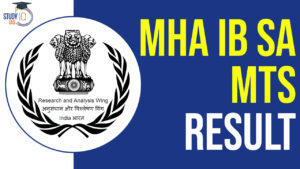Daily Current Affairs for UPSC 2023
Q) Recently seen in news, the Initiative on Critical and Emerging Technology (iCET) is launched by which of the following countries/group?
- QUAD
- Group of 20
- India and ASEAN
- India and the USA
Daily Current Affairs for UPSC – 3 June April 2023
Explanation:
- Option (4) is correct: Recently, U.S. Secretary of Defence said that U.S.-India Initiative on Critical and Emerging Technology (iCET) allows the exploration of new ways to co-develop key defence platforms. Initiative on Critical and Emerging Technology (iCET) was announced during the Quad summit 2022. The iCET will be led by the U.S. National Science Foundation and Department of Science and Technology of India. It aims to foster a partnership joining six of India’s Technology Innovation Hubs to support at least 25 joint research projects with the US in fields such as AI and data science and apply its gains to agriculture, health and climate, and other fields. To provide cutting-edge technologies to the rest of the world which are affordable. iCET adopts the idea of the free and open Indo-Pacific and commitment to fostering an open, accessible, and secure technology ecosystem, underlined with mutual trust. Six Areas of Cooperation are Scientific research and development; quantum and artificial intelligence, defense innovation, space, advanced telecom which would include things like 6G and semiconductors.
Q) With reference to ‘Electronic interlocking (EI)’ system, consider the following statements:
- EI is a type of railway signaling software system.
- It is a processor-based system with many in-built diagnostic checks.
- Even in the event of failure, EI systems cause the least amount of system downtime.
How many of the statements given above is/are correct?
- Only one
- Only two
- All three
- None
Explanation:
- All statements are correct: Changes in the electronic interlocking system have been found as one of the main reason for the train accident in Odisha’s Balasore. Electronic interlocking (EI) is a type of railway signalling system that uses electronic components to control signals and points. The interlocking logic in the EI System is based on software and hence any modification is easy without the need for any wiring changes.
- By employing electronic interlocking, the risk of potential accidents and collisions is significantly reduced, enhancing the overall safety and efficiency of railway operations. It improves the reliability of the system and leads to minimal system downtime even in cases of failures. EI systems are designed to prevent train collisions by ensuring that signals are only cleared to proceed when the route ahead is clear.
Q) Consider the following statements about ‘Anaemia’:
- Anaemia can also be caused by a deficiency of vitamin B12.
- As per the National Family Health Survey-5, more than Fifty per cent of women in the age group 15–49 are anaemic.
- Anaemia Mukt Bharat campaign was launched by the Government of India in 2014.
How many of the statements given above is/are correct?
- Only one
- Only two
- All three
- None
Explanation:
- Statement 1 is correct: Anemia is a medical condition characterized by a lack of healthy red blood cells or hemoglobin in the blood. According to WHO, women in the reproductive age group and having haemoglobin levels lower than 12 grams per decilitre (g / dL), as well as children under five with haemoglobin levels lower than 11.0 g / dL are considered anaemic. There are several types of anemia, including:
- Iron-deficiency anemia, which is the most common type and is caused by a lack of iron in the body.
- Vitamin-deficiency anemia, which is caused by a lack of vitamin B12 or folata.
- Hemolytic anemia, which is caused by the destruction of red blood cells.
- Statement 2 is correct: According to the National Family Health Survey 2019-20, Indian women and children are overwhelmingly anaemic. NFHS-5 found that 57% of women in the age group 15-49 and 67% children between six months and 59 months are anaemic. A prevalence study on anaemia is useful to monitor the progress of reproductive health. This will help keep track of pregnant women and new mothers. WHO estimates that 42% of children less than 5 years of age and 40% of pregnant women worldwide are anaemic.
- Statement 3 is incorrect: Anaemia Mukt Bharat (AMB) is a national campaign launched by the Government of India in 2018 with the aim of reducing the prevalence of anaemia among women and children in India through a life cycle approach. The campaign aims to increase awareness about anaemia, promote the consumption of iron-rich foods, and provide iron and folic acid supplements to vulnerable groups, such as pregnant women and children.
Q) Consider the following statements:
- This area comes under the ‘Red Corridor’ due to left-wing extremism.
- Asiatic wild buffalo and sloth bears are commonly found there.
- It is named after the rivers flowing through this area.
- Both dry peninsular and moist peninsular Sal forests are found here.
Which one of the following Tiger Reserve is best described in the statements given above?
- Kamlang Tiger Reserve
- Udanti Sitanadi Tiger Reserve
- Tadoba-Andhari Tiger Reserve
- Nagarjunsagar-Srisailam Tiger Reserve
Explanation:
- Option (2) is correct: Forest personnel clearing encroachments in Chhattisgarh’s Udanti Sitanadi Tiger Reserve have been attacked by the villagers. Udanti-Sitanadi Tiger Reserve is in the Gariaband district of Chhattisgarh. It was established in 2008-09 by merging two separate wildlife sanctuaries (Udanti and Sitanadi Wildlife Sanctuaries). The Udanti and Sitanadi wildlife sanctuaries derive their name from the rivers Udanti and Sitanadi which flow through the respective sanctuaries. Dry Teak Forest, dry peninsular Sal Forest, moist peninsular Sal Forest, northern dry mixed deciduous forest, dry Bamboo Forest are the main flora type in this area. All the representative faunal species of Central India are found in Udanti-Sitanadi Tiger reserve. Asiatic Wild Buffalo is the key endangered species found here. Apart from the tiger other endangered and rare species are Indian Wolf, Leopard, Sloth Bear and Mouse Deer. Since, the Tiger Reserve and its adjoining area/corridor come under the ‘Red Corridor’ due to left wing extremism; it is a challenge to achieve tiger conservation objectives in the Tiger Reserve.
Q) With reference to ‘Self-Healing Polymers’, consider the following statements:
- Polypropylene glycol and polydimethylsiloxane are mixed to build such polymers.
- The self-healing process in polymers takes place more rapidly at room temperature than at high temperatures.
Which of the statements given above is/are correct?
- 1 only
- 2 only
- Both 1 and 2
- Neither 1 nor 2
Explanation:
- Statement 1 is correct: Recently, Stanford University engineers have developed a multilayer, self-healing electronic skin that automatically realigns during healing. Researchers used two dynamic polymers-PPG (polypropylene glycol) and PDMS (polydimethylsiloxane, better known as silicone) to make Self-Healing Polymers. Both these polymers have rubber-like electrical and mechanical properties and biocompatibility and can be mixed with nano- or microparticles to enable electric conductivity. The chosen polymers and their respective composites are immiscible.
- Statement 2 is incorrect: When warmed, both PPG (polypropylene glycol) and PDMS (polydimethylsiloxane, better known as silicone) soften and flow but solidify as they cool. At room temperature, healing can take as long as a week, but when heated to just 70°C (158°F), the self-alignment and healing happen in about 24 hours. Like human skin, self-healing polymers allow soft electronic and robotic devices to recover autonomously from various forms of damage.


 SSC Stenographer 2024 Notification Out a...
SSC Stenographer 2024 Notification Out a...
 IB SA MTS Final Result 2024 Out at mha.g...
IB SA MTS Final Result 2024 Out at mha.g...
 Model Skill Loan Scheme, Eligibility, Re...
Model Skill Loan Scheme, Eligibility, Re...

















